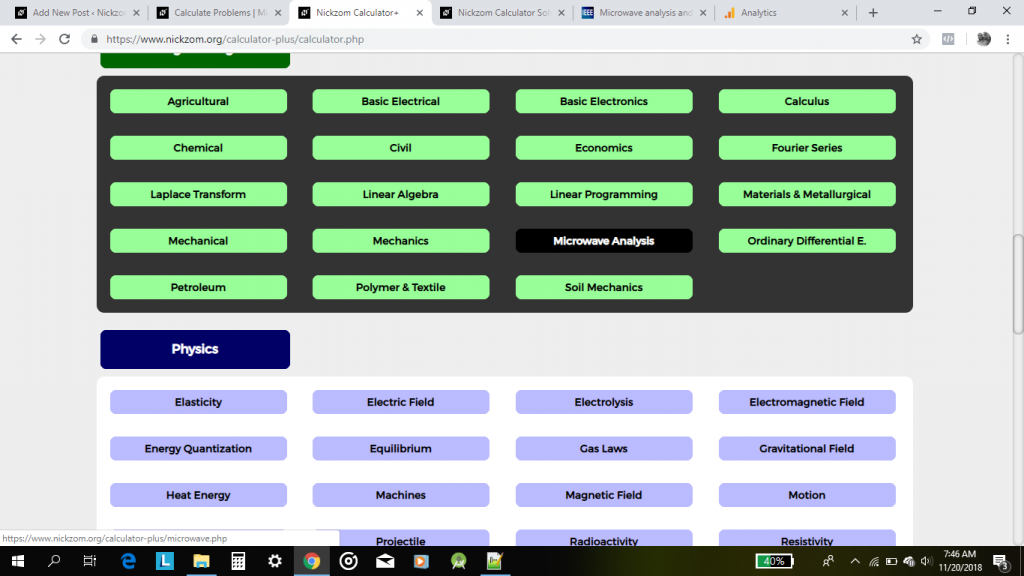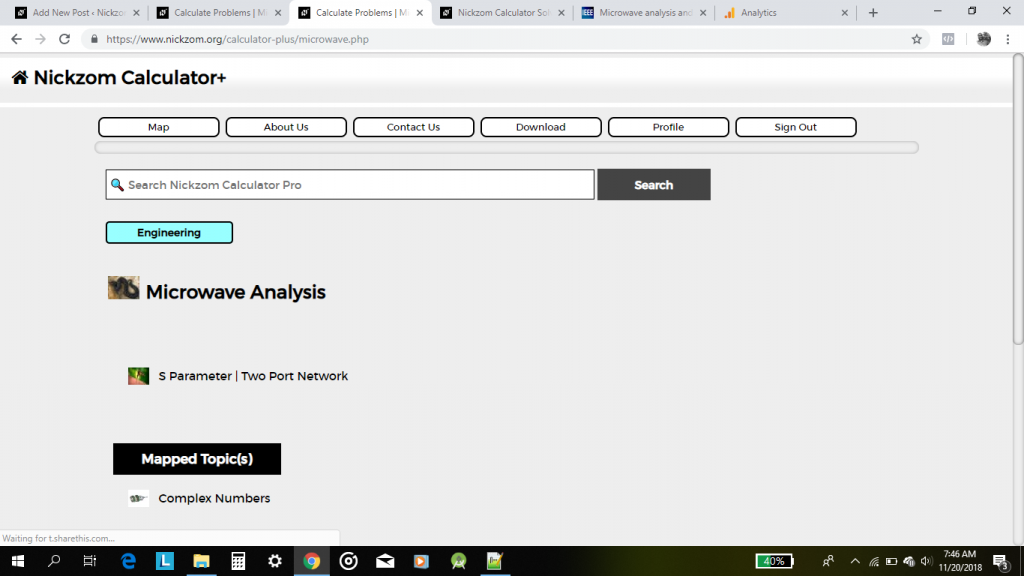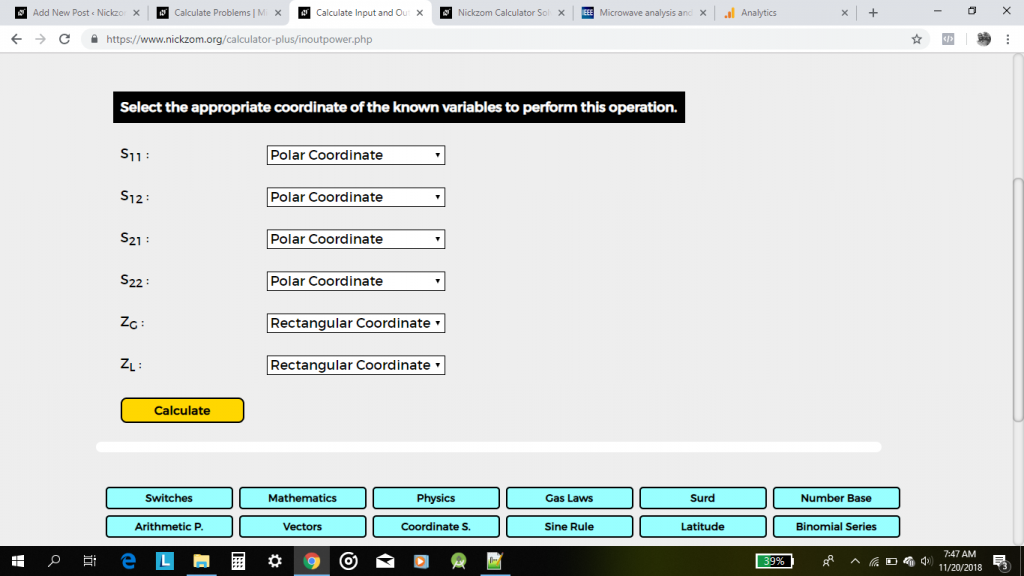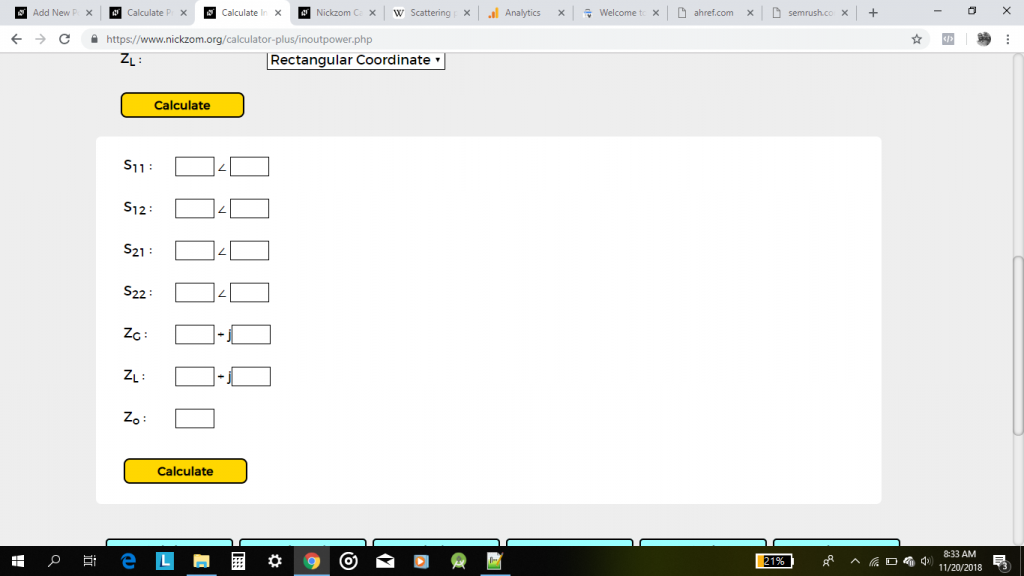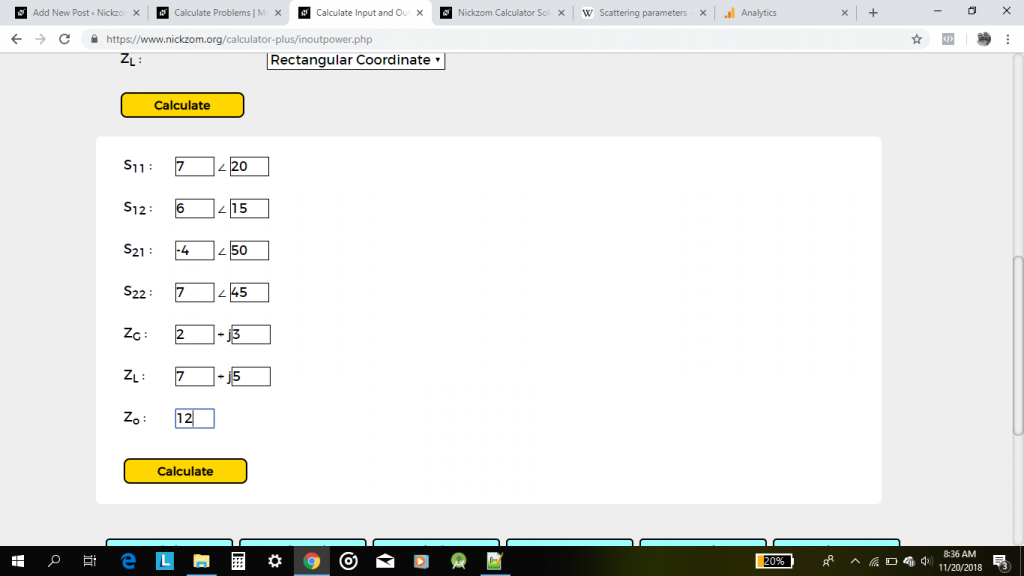Microwave analysis typically refers to the process of analyzing electromagnetic waves within the microwave frequency range, typically ranging from around 1 gigahertz (GHz) to 300 gigahertz (GHz). It involves studying the behavior of microwave components, transmission lines, antennas, and circuits, often focusing on parameters such as S-parameters, reflection coefficients, transmission coefficients, and power gain. Leveraging a powerful calculator for Microwave analysis is crucial for an Electronic Engineer.
The knowledge of microwave analysis itself makes one better understand the networking system of a two port in relation to S parameter. According to Wikipedia, the S Parameters describe the electrical behavior of linear electrical networks when undergoing various steady state stimuli by electrical signals.
Luckily, Nickzom Calculator, the calculator encyclopedia is happy to take care of all calculations dealing with S Parameter (Two Port Network) for you and also show you a step by step guide (workings) on how to solve this problem.
How to Solve Input and Output Reflection Coefficients, Power Gains and Mismatch Factors of S Parameters in Microwave Analysis with Nickzom Calculator
For the purpose of this post, I would show you how Nickzom Calculator solves for the following:
- Input and Output Reflection Coefficients
- Various Power Gains
- Mismatch Factors
First of all, you have to have access to the software package.
One can access Nickzom Calculator+ (Professional Version) – The Calculator Encyclopedia via any of these channels:
Web – https://www.nickzom.org/calculator-plus
Android (Paid) – https://play.google.com/store/apps/details?id=org.nickzom.nickzomcalculator
Apple (Paid) – https://itunes.apple.com/us/app/nickzom-calculator/id1331162702?mt=8
Steps to use the Niczom Calculator for Microwave Analysis
Once you have got access to the software package, please proceed to the Calculator Map then scroll to Engineering
On clicking Microwave Analysis, you see
Click on the link S Parameter | Two Port Network.
Now, click on Input and Output Reflection Coefficients, the Various Power Gains and Mismatch Factors
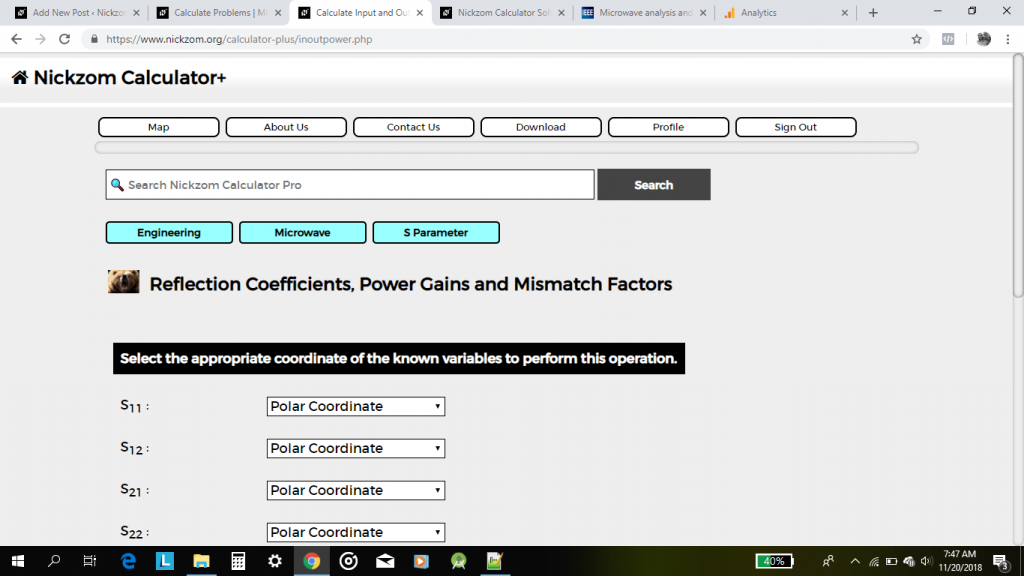
You should know that the S in S Parameter stands for Scattering parameter
Since, we are dealing with a two port network, it would be a Two by Two matrix. At this stage, one is required to select the whether the value for the parameters are to be in polar coordinates or rectangular coordinates.
After making the required selections, click on Calculate
Now, enter the appropriate values
Lastly, simply click on Calculate for Nickzom Calculator to do what it does best, display the result with workings, and accurate solutions and formulas. In the case of this post, I will be displaying the result in the form of a video. Watch and Enjoy!
Easily, you get the answer for your computations in Microwave Analysis using Nickzom Calculator.
Types of S Parameters
Additional Knowledge from Microwaves 101, tells us that there are 4 types of S parameters which are:
- Small signal S-parameters are what we are talking about 99% of the time. By small signal, we mean that the signals have only linear effects on the network, small enough so that gain compression or other non-linear effects do not take place. For passive networks, small-signal is all you have to worry about, because they act linearly at any power level (at least until you blow them up).
- Large signal S-parameters are more complicated. In this case, the S-matrix will vary depending upon the input signal strength. Measuring and modeling large signal S-parameters will not be described on this page (perhaps we will get into that someday).
- Mixed-mode S-parameters refer to a special case of analyzing balanced circuits. We’re not going to get into that either!
- Pulsed S-parameters are measured on power devices so that an accurate representation is captured before the device heats up. This is a tricky measurement, and not something we’re gonna tackle yet.
Networks that can be described with S-parameters are usually single-frequency networks. Receivers and mixers aren’t referred to as having S-parameters, although you can certainly measure the reflection coefficients at each port and refer to these parameters as S-parameters. The trouble comes when one wishes to describe the frequency-conversion properties and this is not possible using S-parameters.
